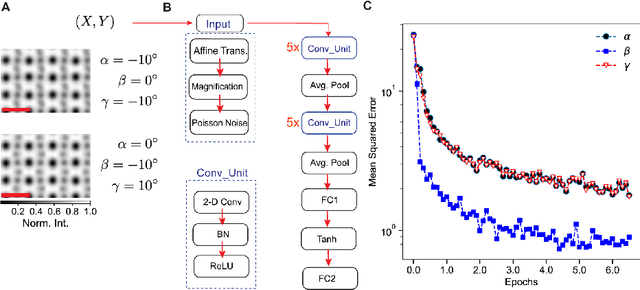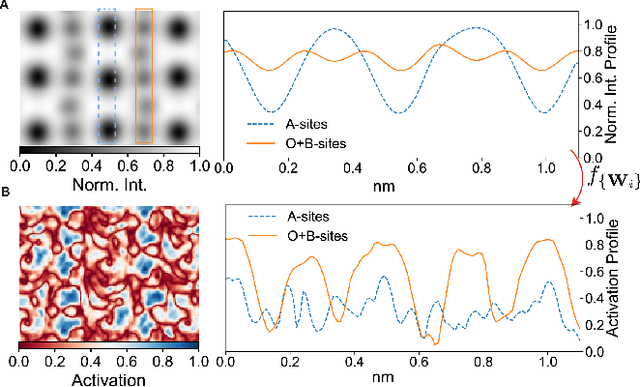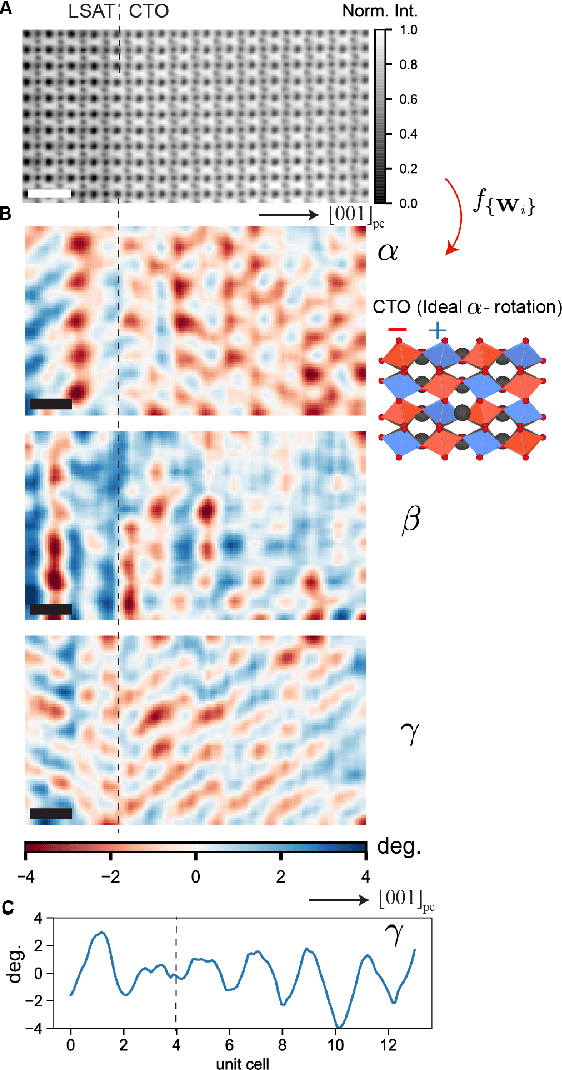Albina Y. Borisevich
Reconstruction of 3-D Atomic Distortions from Electron Microscopy with Deep Learning
Feb 19, 2019



Abstract:Deep learning has demonstrated superb efficacy in processing imaging data, yet its suitability in solving challenging inverse problems in scientific imaging has not been fully explored. Of immense interest is the determination of local material properties from atomically-resolved imaging, such as electron microscopy, where such information is encoded in subtle and complex data signatures, and whose recovery and interpretation necessitate intensive numerical simulations subject to the requirement of near-perfect knowledge of the experimental setup. We demonstrate that an end-to-end deep learning model can successfully recover 3-dimensional atomic distortions of a variety of oxide perovskite materials from a single 2-dimensional experimental scanning transmission electron (STEM) micrograph, in the process resolving a longstanding question in the recovery of 3-D atomic distortions from STEM experiments. Our results indicate that deep learning is a promising approach to efficiently address unsolved inverse problems in scientific imaging and to underpin novel material investigations at atomic resolution.
 Add to Chrome
Add to Chrome Add to Firefox
Add to Firefox Add to Edge
Add to Edge